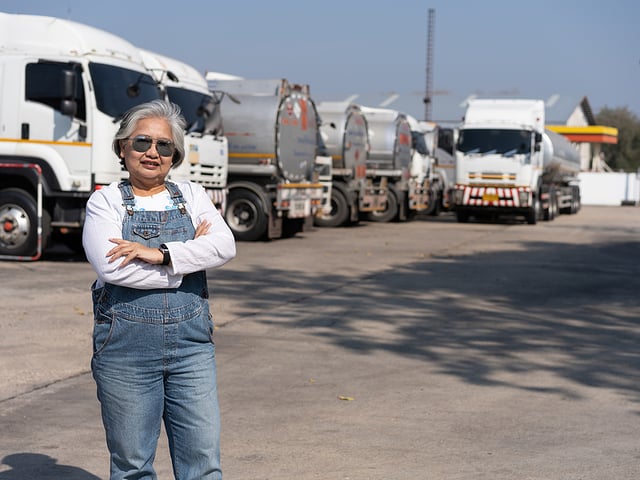
Team Truck Driving: Pros and Cons
From the first day you have your CDL, recruiters will tell you how wonderful team driving is. While it can be a great arrangement, there are a few issues that you need to be aware of before you sign up for a team driving situation.
How Fast
Shippers pay extra for team driving. They expect their loads to be delivered quickly.
Priority Loads
On priority loads, plan on keeping the truck moving all day and all night; stopping to take on fuel and change drivers every 9–10 hours. When you eat, you will eat food that you have brought with you in your truck’s refrigerator. While on a priority load, hot food means fast food, and not a sit-down restaurant.
A typical priority load—moving from California to Florida—is scheduled to average 50 miles per hour, or faster (this is 24/7). For example: Los Angeles, CA to Jacksonville, FL (2,400 miles) in 48 hours. This includes all stops for fuel, food, changing drivers, etc. This is doable in a 70-mile-per-hour truck.
Slower average speeds are expected for shorter runs. Moving from California to Texas is scheduled to average 45 miles per hour. For example: Los Angeles, CA to Fort Worth, TX (1,400 miles) in 31 hours.
Non-Priority Loads
Non-priority loads need to be moved quickly, but there is a little more time—which means less pressure to move at a high pace. Restaurant dining becomes a reality.
Longer runs
The convenience of having a load moved from coast to coast in 2 days costs money. This makes a team too expensive to use on a short run, or on what’s called a “shag” run. A shag run involves driving a short distance and retrieving a trailer (loaded or unloaded) and bringing the trailer to a terminal, drop yard, or storage location. The driver shagging the trailer is not the driver (or team) that will be moving the trailer cross country.
Longer runs mean less time spent trip planning, less time sitting around, and therefore more money.
There will be the occasional short run because that is all that is available. There will be the occasional brokerage run, usually to get the truck into position for a long, fast run.
The Downside
You had better like your co-driver. You will have no privacy. If the team is a married couple, this arrangement will test that marriage.
You will depend on your co-driver’s abilities—while you are in the berth, asleep.
Keeping the truck moving 24/7 takes coordination of effort, planning, clear communications, and sheer force of will.
Advantages for the New Driver and the Experienced Driver
Team driving can be great for a new driver because it will get him into big driving money right out of the gate. The downside for the new driver is that the less experienced driver is the one that will be driving at night.
Team driving can be great for an experienced driver because his partner will be grinding away the miles, while the experienced driver is asleep, at night. The downside is that the experienced driver will be spending time explaining and training. The experienced driver will do 90% of the paperwork and all of the trip planning.
Pros and Cons
Pros:
- More money—about one-and-a-half times the monthly pay of a solo driver
- More consistent work. Driving companies are always scrambling for solo drivers. Driving companies are frantic for team drivers.
- Longer runs, generally speaking
Cons:
- You had better like your co-driver.
- Constantly moving
- Sleeping in a moving berth
- Night driving (Usually, the less experienced driver drives at night.)
- No room
- No privacy
Summary
More money might be worth it, if:
- you like your driving partner
- you can deal with being with him or her 24/7, for weeks at a time
- you can sleep while your partner drives
Keep Reading

Commercial Driver's License Test Blog
How Many Questions are on the CDL Permit Test?
Embarking on a career in commercial truck driving begins with a crucial…

Commercial Driver's License Test Blog
What are the Three Tests for the CDL Permit?
If you’re looking to embark on a career in truck driving, obtaining a C…

Commercial Driver's License Test Blog
How Much Does It Cost to Get a CDL?
The trucking industry dominates freight shipping. Trucks handle over 70…